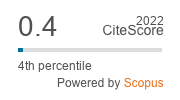Feeding behaviour of pit building of antlion Myrmeleon pseudohyalinus, Holzel 1972 (Neuroptera: Myrmeleontidae) in different mediums, instars and hunger levels
DOI:
https://doi.org/10.33307/entomon.v47i1.685Abstract
Feeding behaviour of Myrmeleon pseudohyalinus (Holzel, 1972) larvae was studied in sand and soil media for second and third instars, and at two hunger levels (fed/starved) in laboratory conditions. Common ant Anoplolepis gracilipes (Smith, 1857) was used as prey in all the experiments. From the eight experiments, feeding time, prey escape and capture success were analysed. The predatory efficiency studied indicated that the capture success was high in second instar larvae irrespective of hunger level and medium. The relationships between selected behaviour, instar, medium and condition were studied and also the relationship between selected behaviour, instar, medium, condition and time period were analysed. From the Canonical Correspondence Analysis (CCA), it is clear that the prey beating, emergence and submergence behaviours were influenced by the larval instar (second and third) and quiescence, pit clearing and jaw set behaviour patterns were influenced by their condition (fed or starved). CCA also shows an influence of time period in the feeding behaviour pattern of antlion larvae.


